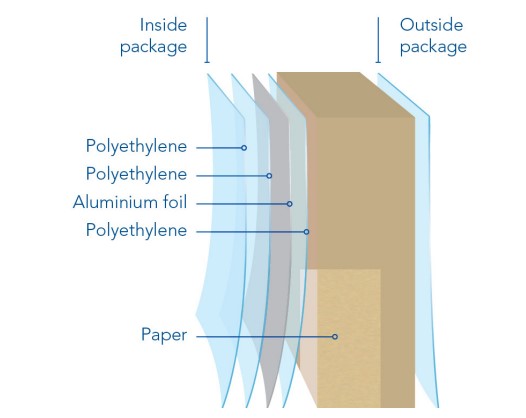3D Imaging for improved package design
Detecting individual layers in laminar materials



Challenge
Carton packages for liquid food products are made of a laminar material consisting of a paper board, thin layers of polymers and a layer of aluminum foil. To obtain the true geometry of such a material, we need to distinguish its components – a task known in image analysis as segmentation. In images obtained using X-rays, the aluminum is relatively easy to segment as it appears bright compared to the paper board and polymer. In contrast, distinguishing the paper board from the polymer is far more challenging, due to the complex structure of the paper board and only a small intensity difference between the polymer and the background.
Collaboration
Through the collaboration between Tetra Pak and the 3D Imaging Center at DTU, the material was characterized using micro X-ray computed tomography scans and in-house developed analysis tools. This collaboration was part of the LINX project in which researchers at leading Danish universities collaborate with scientists in industry to solve industry-relevant problems using advanced neutron and X-ray techniques.
Results
To obtain the true geometry of the packaging material we utilize its layered structure. This means that we only need to find surfaces which separate the different layers. For that, our knowledge of the sample is incorporated, i.e. the paper board, the aluminum and the polymer may be modelled as terrain-like, smooth, layered and nonintersecting surfaces. Those geometric constraints significantly reduce the number of acceptable surface detection outcomes. From all the remaining outcomes, we use a method from graph theory to find the surfaces which have the best fit to the image data. This gives us a segmentation of different material layers.
